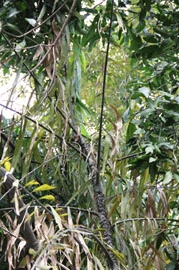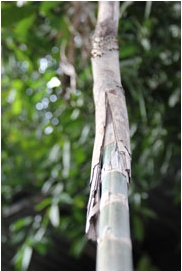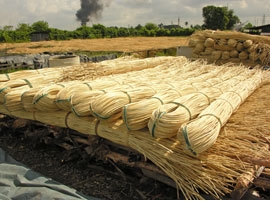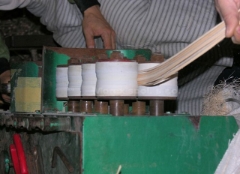Looking for information about rattan? Wondering what a rattan is and how it is made? In our article you will find answers to your questions.
What is rattan and how is it made?
Pedig, often known in our parts as rattan, is a natural material for weaving wicker products made from the inner part of the ‘Calamus rotag’ vine palm, which originates in the subtropical belt of Southeast Asia. Calamus rotag grows mainly in India, Sri Lanka and Myanmar (Burma). The finest wicker, however, is imported from even more distant Indonesia.
In total, more than 600 species of rattan are exported, but only three types are used for weaving baskets and other products. However, the most suitable species are today mostly no longer free-growing plants due to great interest, but are mainly artificially planted palm trees on plantations. Interestingly, the rods of these palm trees can reach up to 200 meters in extreme cases.
Material for weaving baskets and other products
The material you can buy from us is made only from the highest quality mid-range rattan, which is not too hard and allows good shaping. However, the rest of the plant is not destroyed as the hardest part of the plant (from the rhizome) is processed and furniture is made of that, where the strength and resistance requirements are exactly opposite to those of weaving materials.


"Do you wonder where the pale yellow color comes from? It is simple - originally a green palm tree with drying and curdling and drying acquires its typical colour.“
From palm to rattan
By the time the processed rattan gets into your handy hands, it'll have gone a long way, turning unrecognizable.
1.
First, the harvested rattan is sorted and separated into ‘rotas’ – the youngest part of the palm tree that does not hold the bend.
2.
 Afterwards, the palm tree, which has been accumulated and processed, is made into rattan shanks, i.e. flat rattan rods, which, like roundwood, are also used for weaving. These are smooth and glossy on the cheek side, while their reverse side is considerably coarser.
Afterwards, the palm tree, which has been accumulated and processed, is made into rattan shanks, i.e. flat rattan rods, which, like roundwood, are also used for weaving. These are smooth and glossy on the cheek side, while their reverse side is considerably coarser.
3.
 When the pedigo shanks are made, the production of the classic round wicker is on the line. This is most often made by pressing a rod of larger size onto sharp knives that cut it into smaller ones.
When the pedigo shanks are made, the production of the classic round wicker is on the line. This is most often made by pressing a rod of larger size onto sharp knives that cut it into smaller ones.
4.
The coiled rattan is then purchased in ‘clubs’, with different lengths and widths from 1 mm to 7 mm or more. In addition to the natural rattan, rattan dyed is commonly sold.
Before weaving from rattan
Weaving from rattan is fun that keeps your hands busy, but also your head. If you are about to do your first weaving, be sure to soak the rattan before work – ideally in lukewarm water to increase its elasticity and not crack when bending. But if you leave it in the water for long, it will turn gray and start to break.

If you buy a weaving rattan from us, store it in places where direct sunlight does not have access. The sun is damaging it. However, if you keep it well stored, it will last for 10 years.
Rattan sorting
The rattan wicker is divided into several basic groups, which help to make its dimensions easier to navigate.

- AAA RATTAN – round, precise, uniform in colour, break-proof and trimmed at the ends. It is the highest quality rattan ever, it is expensive and therefore we do not import it.
- AA RATTAN - in most cases it is the same colour and the defective rods have a maximum of 10 % in the package. It is a commonly used material for weaving
- AB RATTAN – It has an uneven and darker colour than its more expensive colleagues, with defects not exceeding 30%
- BC – It is a dark rattan, which is made of high-quality rattan. Thanks to its great brittleness, it is not imported and is processed mainly in Asia
- Dyed rattan – most commonly coloured AB or AA pedig